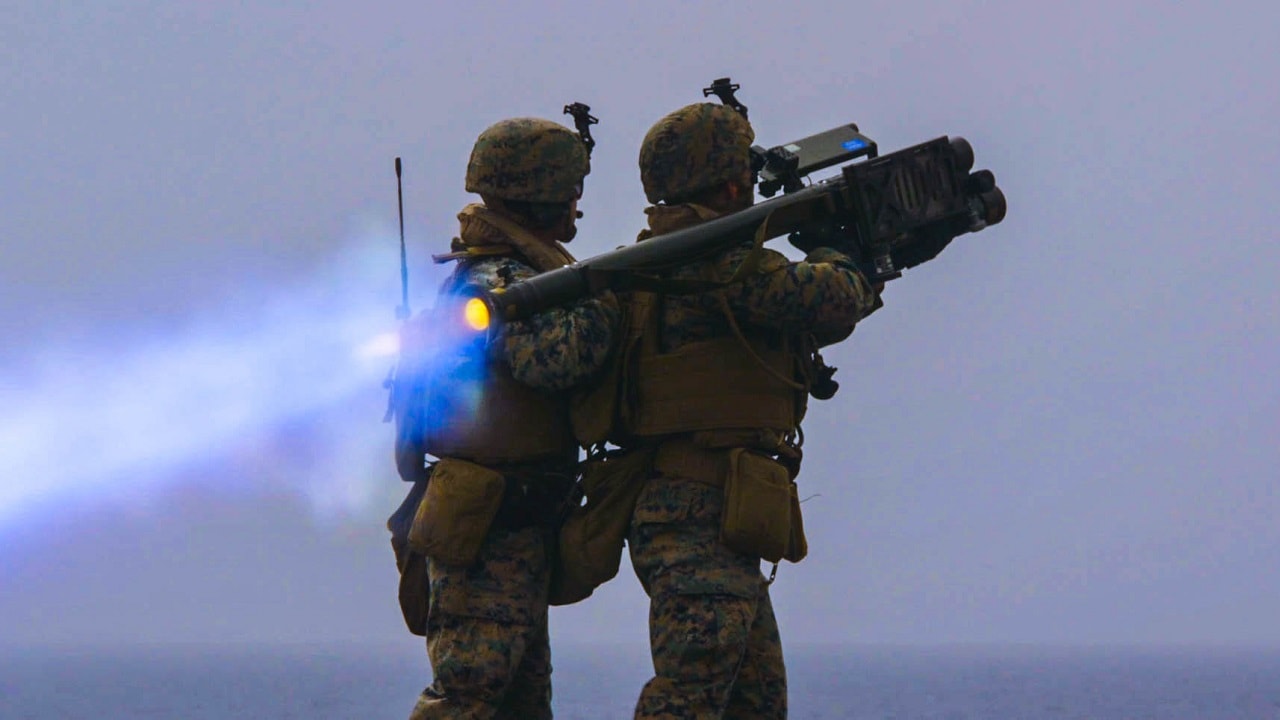Russia is getting a taste of bitter medicine again. Stinger missiles that harassed and maimed Russian aircraft during the war in Afghanistan a generation ago, are back in limited numbers on the Ukrainian battlefield and doing damage to Russian air assets.
President Joe Biden announced on March 1 that a shipment of Stinger anti-aircraft weapons would be sent to Ukraine as part of a $350 million military aid package. Germany will supply 500 Stingers and the Baltic states have provided the anti-aircraft system to Ukraine since January. Other countries such as Italy and Netherlands will also send air defenders.
What Is a Stinger Missile?
The FIM-92 Stinger missile is a MANPAD (man-portable air-defense system shoulder-fired) that specializes in taking out helicopters. Stingers have been around in numbers since the late 1970s. They were originally developed by General Dynamics and are now made by Raytheon Missile Systems. The Stinger can also target low-flying airplanes and drones, even enemy cruise missiles.
The Stinger Missile Has Many Advantages
The all-weather Stinger missile has a 2.5-mile range. The launcher when loaded weighs 33-pounds and maintenance of the unit is straightforward. Users do not need extensive training. They are fire and forget systems which means they are guided by infrared means. The two-man crew can shoot and scoot to a new position after launch. They excel at resisting countermeasures such as flares. Stingers can also be mounted on a vehicle for better portability.
Stinger Missile: Shots Usually Succeed
The targeting system, according to Military Today, can identify friendly aircraft to avoid fratricide. When the launcher locks on target there is a vibration signal and a speaker. The rocket has a solid-fueled propulsion and produces a velocity that is twice the speed of sound. It has a highly-explosive six-pound fragmentary warhead. Raytheon says on its corporate website that the Stinger missile has a “90-percent success rate in reliability and training tests.”
Turned the Tide Against the Soviets in Afghanistan
The Stinger missile system was provided to Mujahideen insurgents in 1986 during the Soviet war in Afghanistan. They reportedly destroyed 250 Soviet aircraft – mainly helicopters. This success made the Soviets change air tactics for their attack and transport helicopters.
Retired Army Lt. Gen. Jim Dubik with the Institute for the Study of War told Army Times, “Once the Stinger’s employed, it has the ability to be a game-changer,” he said. “The Russians don’t have air dominance, but they do have air superiority ― and the Stingers won’t take that away, but it’ll be contested airspace, and that hurts the Russians’ ability to conduct operations and increases Ukraine’s ability to defend.”
Helicopters and Drones Are Stinger Missile Targets
The Stingers can go after what is believed to be a force of over 500 Russian helicopters. So, Ukrainians will need to be trained quickly on the anti-aircraft system. Modernized Stingers have a proximity fuse that explodes the rocket near a target. This upgrade will make it effective against small drones, but Russia has not used many unmanned systems so far during the war.
Stinger Missile Should Be Helpful in Urban Combat
Stingers allow for versatile tactics, techniques, and procedures. They will come in handy during urban combat in which a crew can hide in a bunker or building and blast helicopters and low-flying fighters out of the sky. The Russians have shown that they are using helicopters to land troops in air assault operations, so the Stinger can defend against these actions.
Get Them to the Front Fast
Now the issue is transport. How fast can the Stinger missiles get to the battlefield and get in the hands of fighters? Cities such as Mariupol and Kharkiv are surrounded. Kyiv is expected to be encircled – likely in about a week or two. They will probably be flown to Poland and transported by truck to Kyiv.
Hopefully, the Stinger missiles get to the various fronts in Ukraine quickly. It would have been nice to have the Stingers before the invasion. But better late than never as the fight in Ukraine enters an urban combat phase.
Now serving as 1945’s Defense and National Security Editor, Brent M. Eastwood, PhD, is the author of Humans, Machines, and Data: Future Trends in Warfare. He is an Emerging Threats expert and former U.S. Army Infantry officer. You can follow him on Twitter @BMEastwood.

